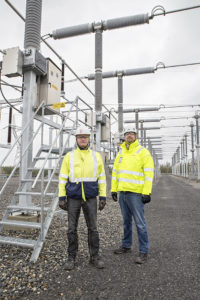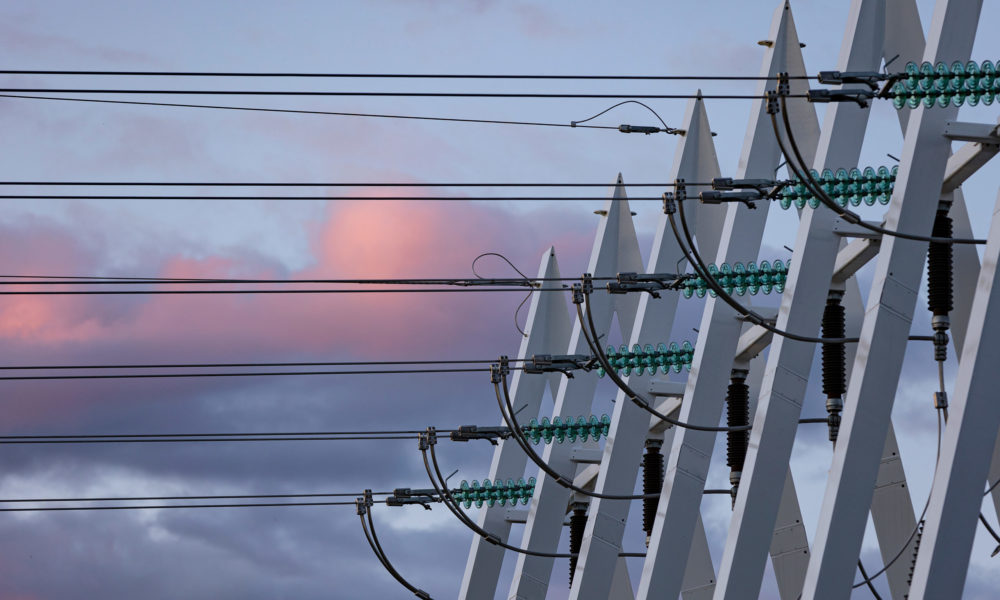
Located in the forests of Southern Ostrobothnia, Alajärvi substation has been one of Finland’s main grid hubs for decades. The first 400 kilovolt substation was completed in Alajärvi in 1971 and it soon made national headlines because of electricity outages in southern Finland.
“The national 400 and 220 kilovolt electricity grid wasn’t very strong in the 1970s.
We had around 10 major disturbances at that time, and three of them originated in Alajärvi,” says Heikki Porkka, who has studied the history of the substation. He is a local operational expert in Fingrid’s western Finland region.
Porkka’s work involves planning transmission outages and electrical safety at substations in the region. He began planning the outages associated with the renewal in 2015. Porkka first became acquainted with this substation in the early 1990s.
“I made an induction visit at Alajärvi in May 1991. I hadn’t previously worked in a 400 kilovolt environment, and the high voltage systems certainly were a bit intimidating before I learned more about them,” recalls Porkka.
Porkka is based at Fingrid’s office in Petäjävesi and has visited Alajärvi hundreds of times – and continues to do so nearly every month. He remembers how the substation stood out from others because of its location – especially in the 1990s.
“The extensive substation area had a lot of natural pine forest and during the autumn you could sometimes find a lot of lingonberries growing there. Sometimes I took a bucket and berry picker with me. If I ate lunch quickly, I still had time to collect a bucket of berries in the pine forest located near today’s PM3 transformer,” says Porkka with a laugh. He reminds us that he only picked berries during his lunch break.
Renewal is part of a larger programme
Alajärvi substation still has an important role, especially in the south-north direction of the main grid. Its renewal is part of Fingrid’s long-term investment programme.
“The equipment is close to the end of its service life. In addition, Ostrobothnia is undergoing a renewal of its electricity distribution network that involves phasing out the 220 kilovolt network. This was taken into account when modernising the substation and the 110 kilovolt switchyard was expanded,” explains Project Manager Sami Mäki from Fingrid’s Substation Projects unit.
Mäki has also had a close link to Alajärvi substation for many years.
“In 2003, I was the switching supervisor for the Main Grid Control Centre when we performed major change work on the old 400 kilovolt main bar-transfer bar switchyard” recalls Mäki.
The thorough renewal of the substation was completed this autumn, and Mäki has been working on the project since 2014. The investment decision for the renewal project was made in spring 2015, after which Mäki handled the project tender inquiries, negotiations and compiled a procurement proposal for contractors.
The actual work began with earth moving work in spring 2016. During last year and this year,
Alajärvi has gained a new 400 kilovolt duplex switchyard and an expanded 110 kilovolt switchyard while the old 220 and 400 kilovolt switchyards have been decommissioned.
This has all been completed on schedule and according to plan.
Project Manager Mäki has monitored different phases of the project to ensure that the quality and occupational safety targets are achieved and the renewal work does not endanger the operational safety of the main grid.
“The worksite lasted for more than 500 days, and we held meetings with the contractor and Fingrid’s project group about once a month,” he says.
Mäki and Porkka have nothing but praise for the work done by the main contractor Empower PN Oy and Sundström Oy, which performed the excavation work according to plan and on schedule.
To celebrate the successful renewal, Fingrid invited the project stakeholders to Alajärvi at the end of August. This group heard the final blasts from the main grid’s last air blast circuit breakers, which were installed in the 1970s. The renewal of the substation and its history were also reviewed at the event.
Renewal work at the Alajärvi substation is finished for the time being. According to Heikki Porkka, the next changes may be associated with renewable energy solutions in the neighbouring areas. •






